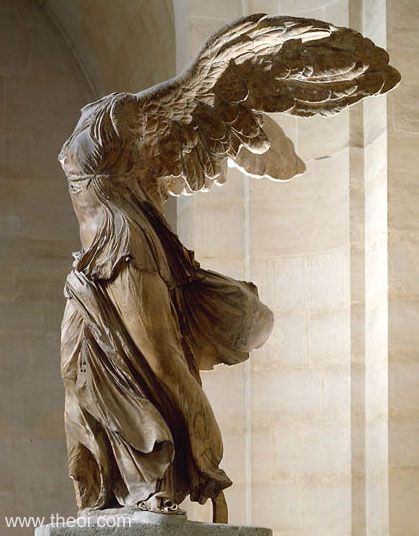
The Statue of a Youth, dating back to 600 B.C., represents Apollo or like an idealized athlete, like Michael Jordan or Michael Phelps, only Greek...

Kritios Boy, 480 B.C., stands in contrapposto, where weight is shifted to one side in a relaxed manner.

3 Goddesses, 435 B.C., commemorate the birth of Athena, and were found on the pediment of the Parthenon as part of a frieze.

The Dying Gaul, 230-220 B.C., was originally made of Bronze by the Greeks, but later copied by the Romans.

Nike of Samothrace, 200 B.C., was also known as the Winged Victory. This sculpture shows her landing on the bow of a ship.

Caryatids, 421-405 B.C., are found at the Erechtheum, and basically, they're female figures used to support architecture rather than columns.
The Parthenon, 448-432 B.C., is in Athens, Greece, made of a whoppin' 70,000 pieces with NO found blueprints. The Parthenon celebrated Athena Parthenos. It was built Doric-style, with absolutely no straight lines, with columns 33 ft. tall. It is 101 ft. wide and 228 ft. long. Fun fact: Napolean wrecked one of its sides with a cannonball. He was a very angry, short Frenchman, what can I say?

Amphora, 530 B.C., made by Exekias, was a large storage jar with 2 handles. This one depicted Achilles and Ajax playing a game of Morra.

Venus de Milo, 130-100 B.C., or Aphrodite of Milos, was discovered in 1820. This marble statue is 6 ft. 8 in. tall, with missing arms and plinth.

The Acropolis, the highest point in Athens, consisted of the Parthenon, Erechtheum, and the Temple of Nike Athena built on a flattened mountain. This area introduced Doric, Ionic, and Corinthian architecture.

The Three Orders of Architecture are listed, from top to bottom, Doric, Ionic, and Corinthian.